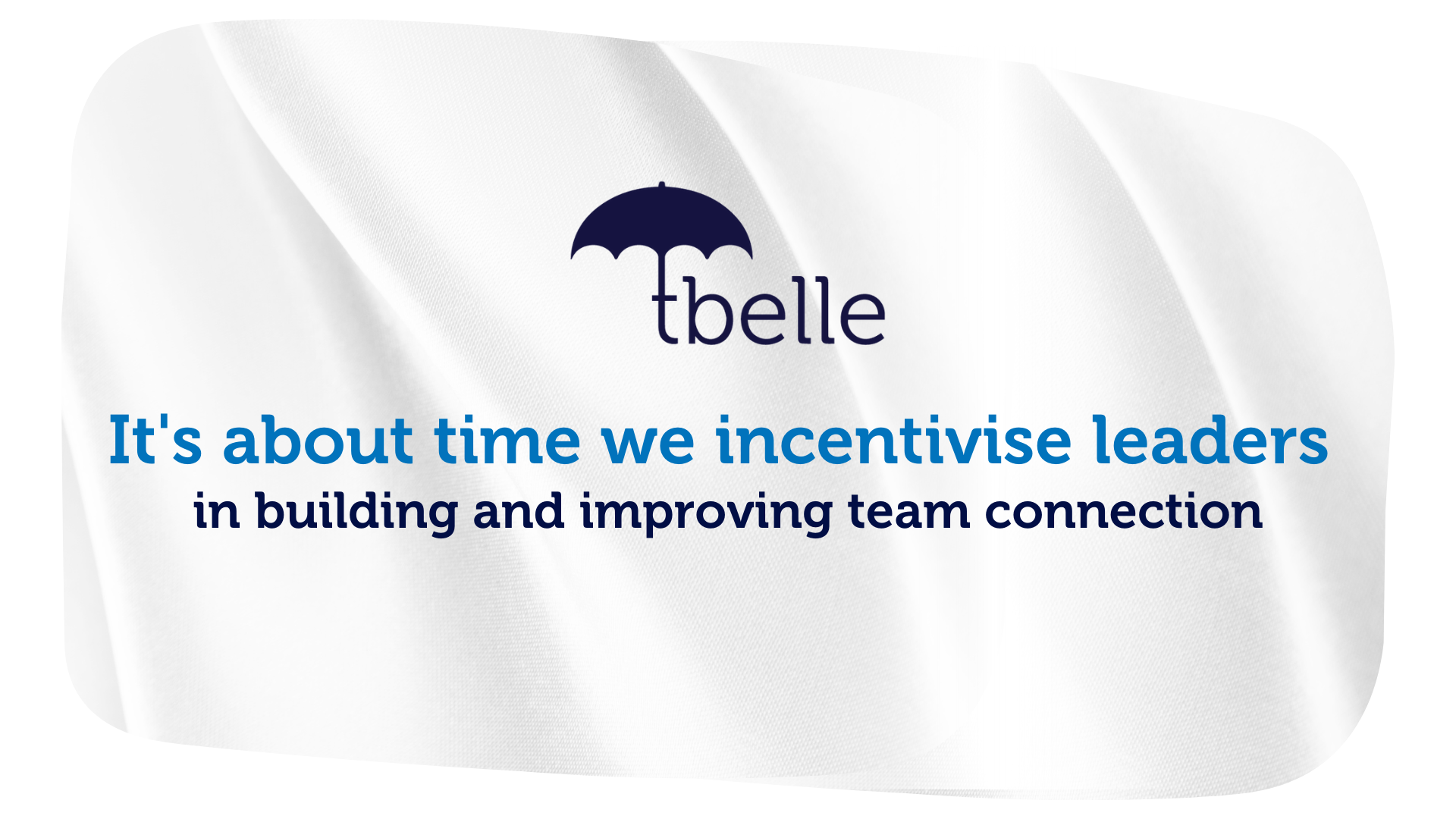Great leaders don’t just drive results—they build connections that inspire collaboration, trust, and long-term success.
Overview: In today’s fast-paced business world, high performance is essential, but it’s only one piece of the puzzle for ensuring long-term success. It’s time we recognise that fostering strong team connections is equally important. Leaders who focus on building relationships within their teams create an environment where collaboration thrives, innovation flourishes, and employee satisfaction soars. When team cohesion is a priority, performance improves naturally.
By incentivising leaders to focus on both performance and team unity, organisations can cultivate a workforce that is not only productive but also deeply engaged and motivated. This shift is a necessary step in the evolution of leadership.
In this blog, we’ll discuss why rewarding leaders for strengthening team bonds is essential and how Workforce Integration can help achieve a perfect balance between collaboration and performance.
Why Incentivising Leaders for Team Connection Matters
Incentivising leaders who build and improve team connections is important because it directly impacts the overall success and stability of an organisation. Leaders who prioritise fostering strong relationships within their teams create an environment of trust, collaboration, and open communication, which leads to more effective teamwork and problem-solving.
Research indicates that incentivising leaders can significantly enhance their motivation and, consequently, their effectiveness. A study published in the Journal of Business Research found that monetary incentives increase employees’ motivation, leading to improved job performance.
Additionally, the Incentive Research Foundation reports that properly constructed incentive programs can boost performance by as much as 44%.
When leaders are given incentives, it significantly boosts their motivation and accountability. Knowing that their efforts will be recognised and rewarded drives leaders to invest more in their work and take a more proactive approach. This increased motivation often results in improved leadership behaviors, such as better communication, higher emotional intelligence, and a stronger focus on team engagement.
Leaders become more strategic in their decision-making, as they are held accountable for their team’s success, encouraging them to foster a collaborative and high-performing team environment. Ultimately, this leads to more effective leadership and stronger team cohesion, benefiting the organisation as a whole.
Effective Incentives for Building Team Connection
Incentives are a powerful tool for shaping leadership behavior, particularly in motivating leaders to prioritise team connection. Financial rewards, such as bonuses linked to team engagement, retention rates, or collaborative success, offer clear motivation for leaders to focus on fostering team cohesion. For example, tying a portion of annual bonuses to team satisfaction surveys or project outcomes directly ties leadership success to team performance.
Recognition programs also play a crucial role by publicly acknowledging leaders who excel at building team connections. This could be through awards at company events, social media shout-outs, or personalised thank-you notes from senior leadership, all of which boost morale and inspire others to follow suit. Flexible benefits, such as wellness programs or additional leave, reward leaders for promoting a healthy, supportive work environment that prioritises team well-being.
Team-based rewards, like shared incentives or team-building outings, further encourage leaders to focus on collective success rather than individual achievement. Additionally, recognising leaders for milestones such as low turnover or high employee satisfaction reinforces the value of their efforts in fostering a cohesive team.
Overall, these incentives create a comprehensive system that aligns leadership behaviors with the organisation’s goals of strengthening team connection and driving long-term success.
Case Study: Incentives in Action
Real-world examples showcase the impact of leadership incentives on team performance. This section includes evidence-based insights, such as the IZA study and outcomes from Workforce Integration projects, demonstrating the tangible benefits of these approaches.
The IZA Research Study, “Incentivising Team Leaders: A Firm-Level Experiment on Subjective Performance Evaluation of Leadership Skills,” examined the impact of leadership incentives on team productivity at a manufacturing firm. The intervention involved performance evaluations of team leaders based on their leadership activities, with bonuses tied to their rank. This approach aimed to balance leaders’ direct output with activities that benefit the entire team.
The results were significant, showing a 7% increase in worker productivity at the treatment plant compared to the control plant, while team leader productivity remained unchanged. This suggests that leadership incentives enhanced team performance without negatively affecting individual output. The study found that subjective evaluations and leadership rankings boosted overall productivity by motivating leaders to increase their engagement with team activities.
This case highlights the tangible benefits of incentivising team connection alongside performance. Aligning leadership incentives with team cohesion fosters an environment where leaders are motivated to invest in their team’s success, leading to better productivity and morale.
Building on these insights, Tbelle’s leadership incentive programs align with the principles outlined in the IZA study. Tbelle recognises exceptional leadership through its Quarterly Performance Bonus program, rewarding leaders not only for meeting performance targets but also for fostering strong team connections. This mirrors the IZA research, which found that incentivising leaders for team engagement enhances productivity.
Additionally, Tbelle celebrates leaders monthly through awards like “Superheroes of the Month” recognising those who make a significant impact on team dynamics, and “Values Champions,” honoring leaders who exemplify organisational values. These recognition programs reinforce the importance of leadership behaviors that strengthen team cohesion, ultimately leading to higher morale and sustained success within the organisation.
Metrics to Assess a Leader’s Success in Building Team Connection
Evaluating a leader’s impact on team connection requires a mix of traditional performance metrics and indicators of relational success. This section explores key metrics and tools to holistically assess leadership effectiveness.
Here are some key leadership metrics a company can use to evaluate how to effectively incentivize a leader’s impact on team connection and cohesion:
| Metrics Type | Description | Example Tool |
| Employee Engagement Scores | Regular surveys capture how connected and engaged team members feel. | Gallup Q12 Employee Engagement Survey |
| Team Retention Rates | Low turnover rates indicate a positive work environment fostered by effective leadership. | HR platforms like BambooHR |
| 360-Degree Feedback | Peer and subordinate reviews offer valuable insights into a leader’s ability to foster collaboration and trust. | SurveyMonkey or Qualtrics 360 Feedback |
| Observation of Team Dynamics | Assessing the quality of communication and teamwork during meetings highlights leadership impact. | Internal observation checklists or Korn Ferry |
| Frequency of Check-Ins | Regular one-on-one meetings demonstrate a leader’s commitment to understanding and supporting their team. | Tools like Lattice or 15Five |
| Conflict Resolution | The ability to address and resolve team issues reflects a leader’s relational skills. | Conflict management training modules by Coursera or HR analytics |
| Engagement Platforms | Tools providing data-driven insights into team sentiment and leadership effectiveness. | Culture Amp or Officevibe |
| Sentiment Analysis Software | Analyses team communication patterns to identify areas for improvement. | Sentiment analysis software |
How Workforce Integration Amplifies These Incentives
Workforce Integration amplifies these incentives by creating a cohesive and aligned work environment where team members, regardless of location, feel connected to the organisation’s culture, values, and goals.
By seamlessly integrating employees into a unified team, Workforce Integration ensures that leaders have the tools and support they need to foster meaningful relationships within their teams. This approach makes it easier for leaders to prioritise team connection, as the integration process actively encourages collaboration, open communication, and trust across all levels.
When combined with incentives that reward team cohesion, Workforce Integration helps reinforce the idea that leadership success is not just about individual performance but also about creating a supportive, engaging, and collaborative environment. This holistic approach leads to higher engagement, improved team dynamics, and ultimately, enhanced organisational performance.
Conclusion
It’s time to rethink how we evaluate and reward leadership. By Incentivising leaders to build and improve team connection—not just focus on performance—organisations can foster a more engaged, innovative, and cohesive workforce.
Workforce Integration amplifies these efforts by aligning team goals, leveraging data-driven insights, and encouraging inclusive leadership. organisations that invest in these strategies not only see improved productivity but also create a workplace where employees thrive and succeed together.










